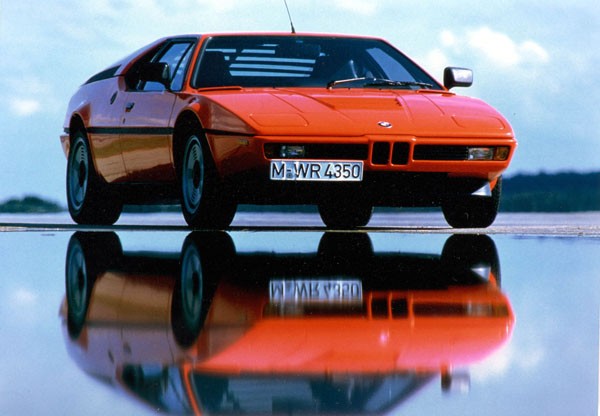Prior to World War II, BMW’s reputation revolved primarily around its sporting excellence. After WW II the company was crippled and as the majority of its assets were in Eastern Germany these were grabbed by the Russians. Almost all that BMW had left after the war was a tradition and spirit. Not until the late 1950s could the company translate these qualities into something more tangible, with its first small sporting saloons of the post-war period.
BMWs image was painstakingly rehabilitated and amply shown off by its prolific racing successes, even winning the Grand Prix World Championship with the Brabham team. However BMW really needed a sports racing car similar to Ford’s GT40 as a road going flagship. In 1972, BMW announced a remarkable gull-winged, mid-engined CSL coupe, the BMW Turbo. It was never intended for mass production.
In the late 1970s BMW needed a new competition car to fly the company flag, as the winged CSL coupe was showing its age. The need was identified as a senior-league supercar, and the car that emerged was called, simply, the M1 – the M-style logo being BMW’s way of saying `Motorsport’. But the story of BMW’s dream car reads in its early stages more like a nightmare.
Because mainline production could not be disrupted the M1 was to be styled in Italy by Italdesign and built by Lamborghini, but it would be powered by BMW’s SOHC, 24-valve 3.5-litre straight six. BMW and Lamborghini worked well on the chassis, while Dallara developed the suspension. Prototypes were built, then suddenly Lamborghini was in very real financial trouble, appearing near collapse. The project was too far advanced to be stopped, but at least suppliers could still deliver and final assembly was undertaken in Germany by Baur.
The M1 that went on sale in 1979 – a year late – was impressive, with a strong square-section steel space frame and mid-mounted 206kW engine for the road version, and around 350 kW in the Procars. The latter were built for a series of one-model races, set up by BMW’s competition manager who realised the overweight car would never be competitive in main-line racing. This made the M1 famous. Procar was a sort of Race of Champions, matching 15 private owners against the five fastest Friday afternoon qualifiers at each Grand Prix. The Procar racers were essentially in Group 4 spec, with rosejointed suspension, no brake servo but circuits with adjustable front-rear distribution, wider wheels and tyres, quicker steering and a deeper front air dam.
Not that the standard car was any slouch. Independent tests confirmed that it could attain 258 km/h and hit 96 km/h from a standstill in 5.4 seconds. So the M1 ranked with the very quickest of contemporary supercars, and delivered its mighty performance with an admirable lack of temperament or fuss.
A total of 450 M1s were built between 1978 and 1980 and they made outstanding roadcars. The M1 never really had the impact on the track its specification suggested although its very existence was a potent statement of BMW’s yearning to succeed in the toughest arena of all – endurance motor racing.
Conceived and developed as a pure racer, the M1 could easily have made it but for the many and seemingly interminable problems that dogged it. Nothing has taken away its brilliance as a road car and it was a perfect symbol of BMW’s triumphant return and forerunner to the M series Beemers.









